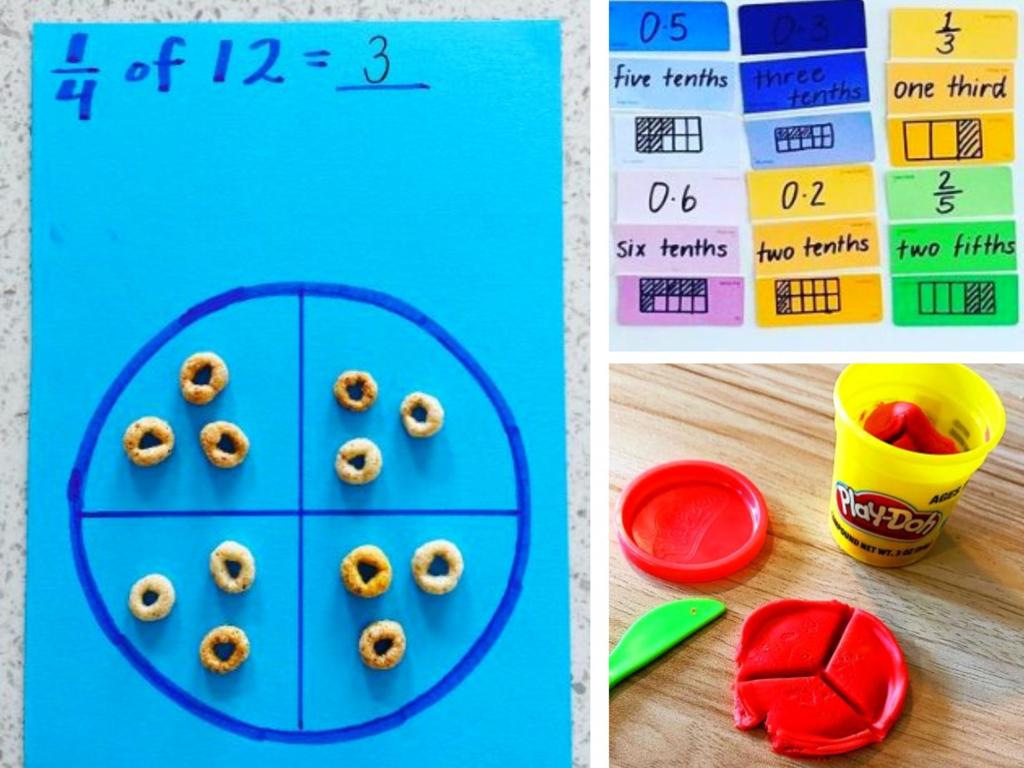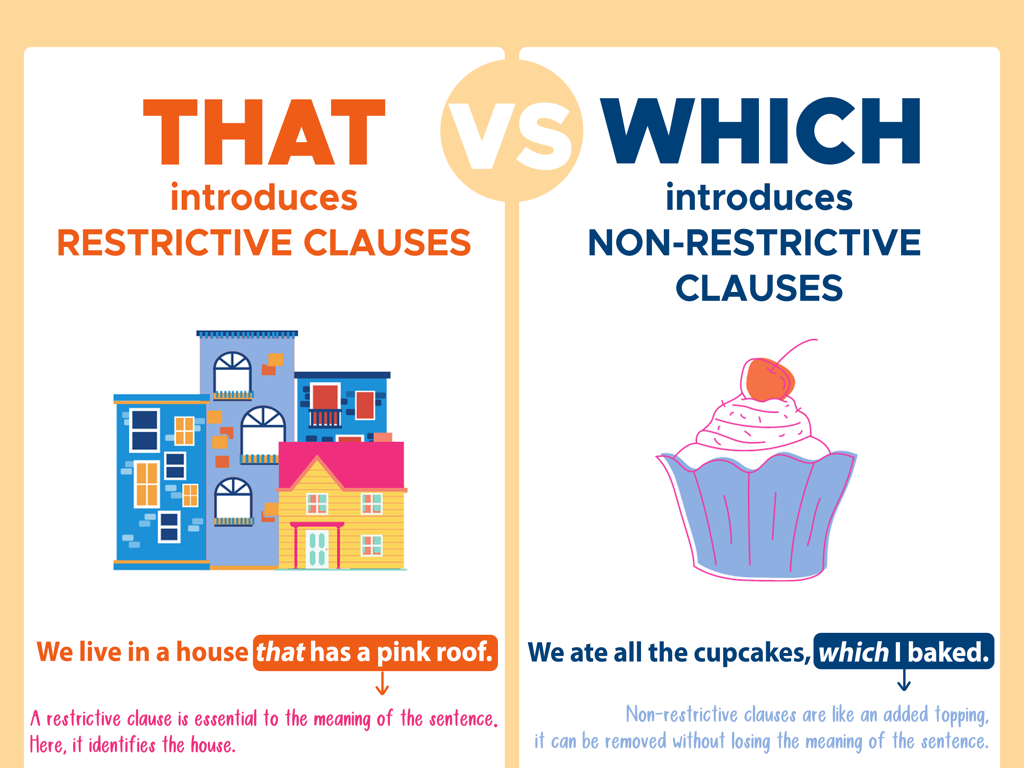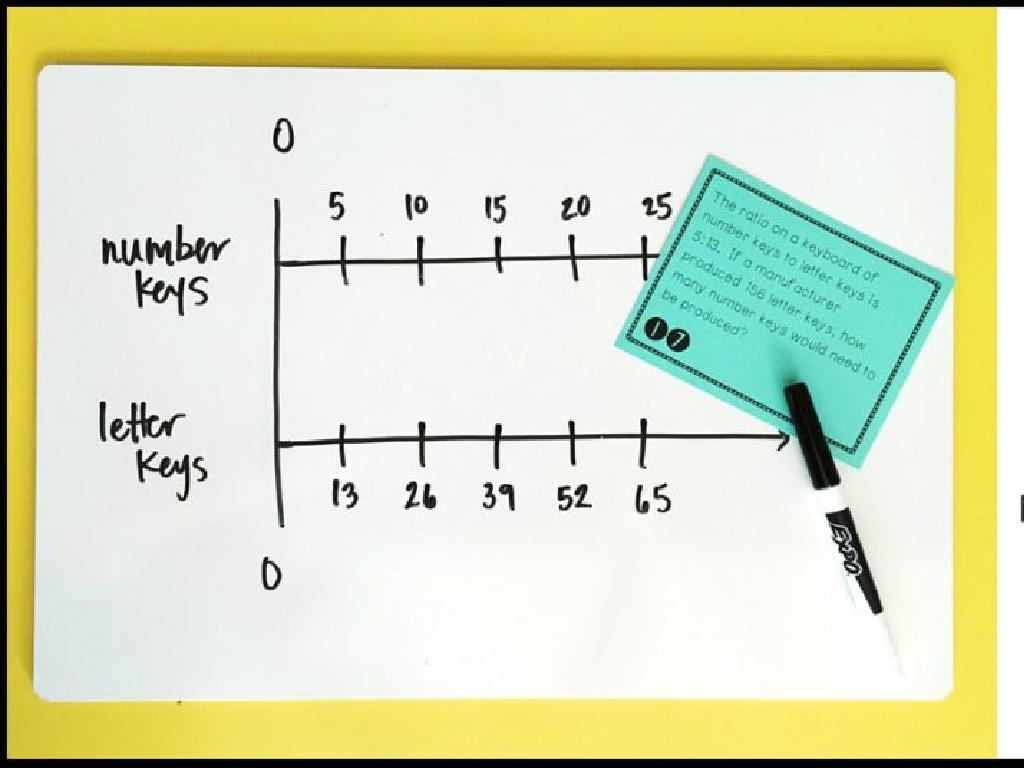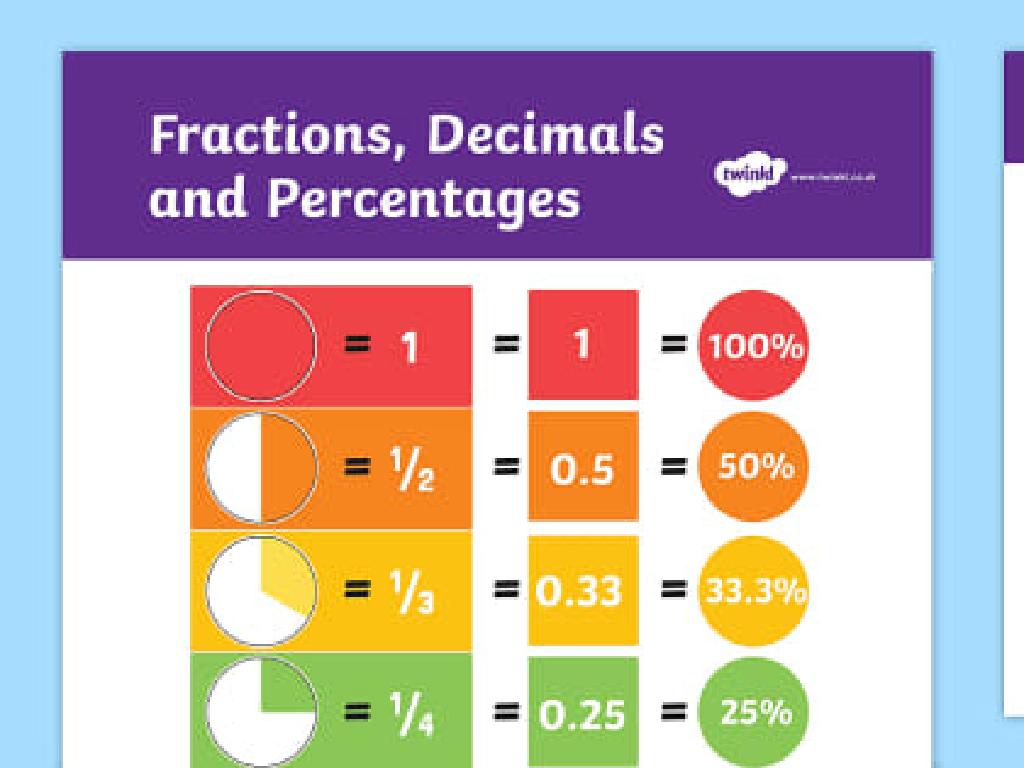Volume Of Cones
Subject: Math
Grade: Eighth grade
Topic: Surface Area And Volume
Please LOG IN to download the presentation. Access is available to registered users only.
View More Content
Introduction to Volume of Cones
– Understanding 3D shapes
– 3D shapes have length, width, and height
– Defining volume
– Volume measures space inside a 3D object
– Volume in daily life
– Ice cream cones, party hats
– Calculating cone volume
– Use formula 1/3Àr²h for cone volume
|
This slide introduces the concept of volume with a focus on three-dimensional shapes, particularly cones. Begin by discussing the attributes of 3D shapes, emphasizing that unlike 2D shapes, they have depth. Explain that volume is the measure of how much space an object occupies, which is crucial in various real-world applications. Provide everyday examples where volume is considered, such as filling an ice cream cone or estimating the capacity of a party hat. Conclude by presenting the formula for the volume of a cone (1/3Àr²h) and explain each part of the formula. Encourage students to visualize the concept by considering how much ice cream a cone can hold. The next class activities will involve applying this formula to calculate the volume of cones with different dimensions.
Recap: Volume of Cylinders
– Reviewing cylinder volume
– Cylinder volume formula
V = Àr²h, where r is radius and h is height
– Example: Cylinder volume calculation
For r=3cm, h=5cm, volume is V = À(3cm)²(5cm)
– Application in problem-solving
|
Begin with a brief review of what a cylinder is and its characteristics. Reinforce the formula for calculating the volume of a cylinder, V = Àr²h, where r is the radius of the base and h is the height of the cylinder. Work through an example problem to calculate the volume of a cylinder with given dimensions, ensuring to demonstrate each step clearly. This will help students understand how to apply the formula in practical situations. Encourage students to solve similar problems and understand the application of the formula in real-world contexts, such as determining the capacity of cylindrical containers.
Introduction to Cones
– Define a cone
– A 3D shape with a circular base tapering to a point
– Identify cone parts
– Base: flat surface, Height: vertex to base, Slant Height: side length
– Relate cones and cylinders
– Cones have 1/3 the volume of a cylinder with the same base and height
– Cone volume formula
– Volume formula: V = (1/3)Àr²h, where r is radius and h is height
|
Begin the lesson by defining a cone as a three-dimensional geometric shape that tapers smoothly from a flat, circular base to a point called the apex or vertex. Explain the parts of a cone: the base, height, and slant height, ensuring students understand each term. Discuss how cones are related to cylinders, emphasizing that a cone has one-third the volume of a cylinder with the same base area and height. Introduce the formula for the volume of a cone and explain each component of the formula. Use diagrams to illustrate the parts of a cone and provide examples of cones in real life. Encourage students to visualize how a cone can fit inside a cylinder as a way to understand the volume relationship.
Exploring the Volume of Cones
– Cone volume formula: V = 1/3Àr²h
– Derivation of the formula
– Derived by integrating the area of circles from the apex to base
– Cone vs. Cylinder volume
– A cone’s volume is 1/3 that of a cylinder with the same base and height
– Practical applications of cone volume
– Examples: ice cream cones, funnel volume calculations
|
This slide introduces the mathematical concept of finding the volume of cones, an important part of geometry in the eighth-grade curriculum. Start by presenting the formula for the volume of a cone, V = 1/3Àr²h, where r is the radius of the base and h is the height. Explain the derivation of the formula as a process of integrating the areas of circles, which decreases in size from the base to the apex of the cone. Highlight the comparison between the volume of a cone and a cylinder, emphasizing that a cone has one-third the volume of a cylinder with the same base area and height. Conclude with real-world examples where calculating the volume of a cone is necessary, such as determining the amount of ice cream an ice cream cone can hold or the volume of a funnel. Encourage students to think of other examples and to visualize the concept by comparing cones and cylinders they encounter in daily life.
Calculating Cone Volume
– Example 1: Cone volume calculation
– Given: radius (r) and height (h), use formula V = (1/3)Àr²h
– Example 2: Real-world volume application
– E.g., Ice cream cone: Calculate how much ice cream it can hold
– Guided practice session
– Understanding cone volume formula
– V = (1/3)Àr²h, where V is volume, r is radius, and h is height
|
Begin with a clear example problem to calculate the volume of a cone using the formula V = (1/3)Àr²h. Ensure students understand each component of the formula. For the second example, apply the formula to a real-life scenario, such as determining the volume of an ice cream cone, to illustrate practical applications. During the guided practice, walk through several problems as a class, allowing students to apply the formula and reinforce their understanding. The goal is to ensure students are comfortable with the concept and calculation of cone volume. Provide additional practice problems for students to solve independently, and be ready to assist anyone struggling with the concept.
Volume of Cones: Practice Problems
– Solve individual volume problems
– Pair up and compare solutions
– Share your answers and understand different perspectives
– Discuss various solving methods
– There may be multiple ways to approach a problem
– Reflect on problem-solving strategies
|
This slide is designed to engage students in active practice of calculating the volume of cones. Start with individual work to allow students to apply the formula for the volume of a cone (V = 1/3Àr^2h) on their own. Then, have them pair up to compare their solutions and methods, fostering collaborative learning. Encourage discussion on the different methods used, which could include breaking down the problem into simpler steps, visualizing with a diagram, or using different formulas. Conclude with a reflection on the problem-solving strategies that were most effective. This activity will help students to solidify their understanding and to appreciate the value of teamwork and discussion in learning math concepts.
Class Activity: Create Your Own Cone
– Gather materials: paper, scissors, tape
– Follow instructions to craft a cone
Use the paper to form a cone shape and secure it with tape
– Measure your cone’s dimensions
Measure the radius of the base and the height of the cone
– Calculate your cone’s volume
Apply the formula: Volume = (1/3)Àr²h
|
This hands-on activity is designed to help students understand the concept of volume through a practical exercise. Provide students with paper, scissors, and tape to construct their own cones. Once the cones are made, guide them to measure the radius of the base and the height accurately. Then, assist them in applying the volume formula for cones. Encourage students to compare their calculated volumes and discuss any discrepancies. This activity will reinforce their understanding of geometric shapes and the application of formulas in real-world contexts. Possible variations of the activity could include using different sizes of paper, comparing volumes of cones with different dimensions, or even calculating how much ice cream their cones could hold!
Volume of Cones: Review and Q&A
– Recap: Formula for cone volume
– Volume = (1/3)Àr²h, where r is radius and h is height
– Discuss: Examples solved in class
– Review how we applied the formula in different problems
– Q&A: Ask your questions now
– Clarify: Resolve any confusion
– Let’s address any specific issues you’ve encountered
|
This slide is aimed at reinforcing the students’ understanding of the volume of cones. Begin by reviewing the formula for calculating the volume of a cone and emphasize the importance of the constants and variables in the formula. Recap the examples solved during the class to show practical applications of the formula. Open the floor for students to ask any questions they might have, encouraging them to actively participate and seek clarification. The goal is to ensure that by the end of this session, all students have a clear understanding of the concept and feel confident in solving problems related to the volume of cones. Be prepared to address common misconceptions, such as confusing the formulas for volume of different 3D shapes.
Homework: Mastering Cone Volumes
– Complete the Volume of Cones worksheet
– Apply lessons to solve problems
– Find real-life cone examples
– e.g., ice cream cones, party hats
– Measure and calculate their volume
– Use formula V = 1/3Àr²h for calculation
|
This homework assignment is designed to reinforce the day’s lesson on the volume of cones. Students are expected to complete a worksheet that provides practice problems on calculating the volume of cones. Encourage students to apply the formula V = 1/3Àr²h, where ‘V’ stands for volume, ‘r’ for the radius of the cone’s base, and ‘h’ for the height of the cone. Additionally, students should look for cone-shaped objects around them, such as traffic cones, ice cream cones, or party hats, measure their dimensions, and calculate their volume. This real-world application helps solidify their understanding of the concept. The next class will include a discussion of their findings, allowing students to share and learn from each other’s examples.





